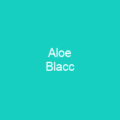Windhoek is the capital and largest city of Namibia. It is located in central Namibia in the Khomas Highland plateau area. The city developed at the site of a permanent hot spring known to the indigenous pastoral communities. It developed rapidly after Jonker Afrikaner, Captain of the Orlam, settled here in 1840 and built a stone church.
About Windhoek, Namibia in brief

The first known mention of the name windhoek was in a letter from JonkerAfrikaners to Joseph Tindall, dated 12 August 1844. In 1840 Jonker afrikanER established an Orlam settlement at Windhoeking. He and his followers stayed near one of the main hot springs, located in the present-day Klein Windhoeker suburb. He built a church that held 500 people; it was also used as a school. After 1907, development accelerated as indigenous people migrated from the countryside to the growing town to seek work. After World War II more capital became available to improve the area’s economy. After 1955, the city introduced the world’s first potable water supply supply supply in 1958. After the war the city was administered by a South African military government, and no further development occurred. In 1920, after the Treaty of Versailles, the territory was placed under a League of Nations Class C mandate and again administered by South Africa. The German colonial era came to an end after the end of World War I but South West. Africa, and with it Windoek, already fell in 1915. The capital city was founded on 18 October 1890, when von François fixed the foundation stone of the fort, known as the Alte Feste.
You want to know more about Windhoek, Namibia?
This page is based on the article Windhoek, Namibia published in Wikipedia (as of Dec. 30, 2020) and was automatically summarized using artificial intelligence.







